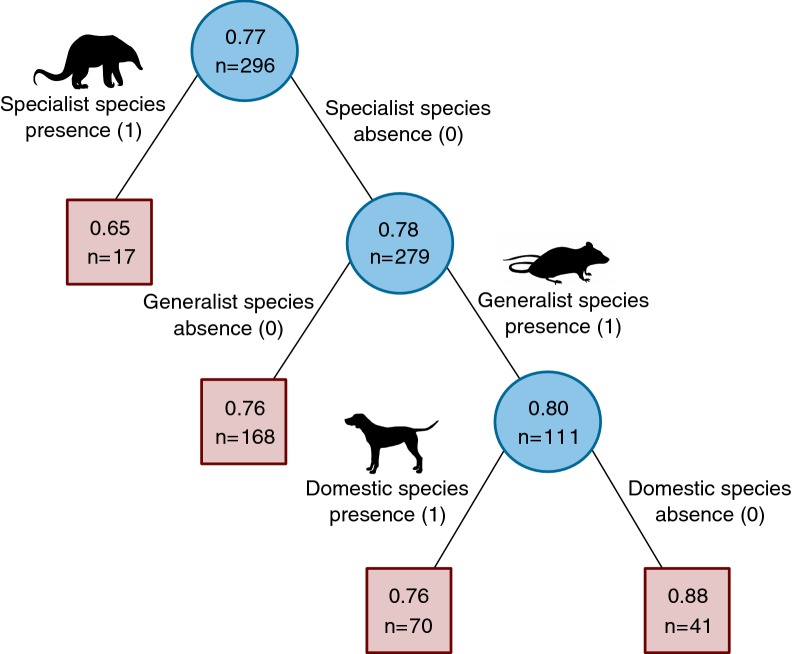Fig. 2.
Regression tree analysis for vector infection. To test the relationship between vector infection prevalence and host species habitat associations we used a regression tree model. We considered domestic, generalist, and specialist sylvatic as habitat associations. Circles and rectangles represent non-terminal and terminal nodes, respectively. The circled node at the top is labeled with the number of infected individuals (n = 296) and total R. prolixus infection rate variance explained by the tree (77%). Links between nodes are labeled with the presence (1) or absence (0) of a species-habitat association. All nodes are labeled with the predicted infection rate and the number of individuals that meet the preceding link(s) condition(s). The highest infection rate, 88%, was predicted for R. prolixus feeding solely from generalist mammal species. On the other hand, the lowest infection rate (64%) was predicted for individuals having blood meals only from specialist mammal species

